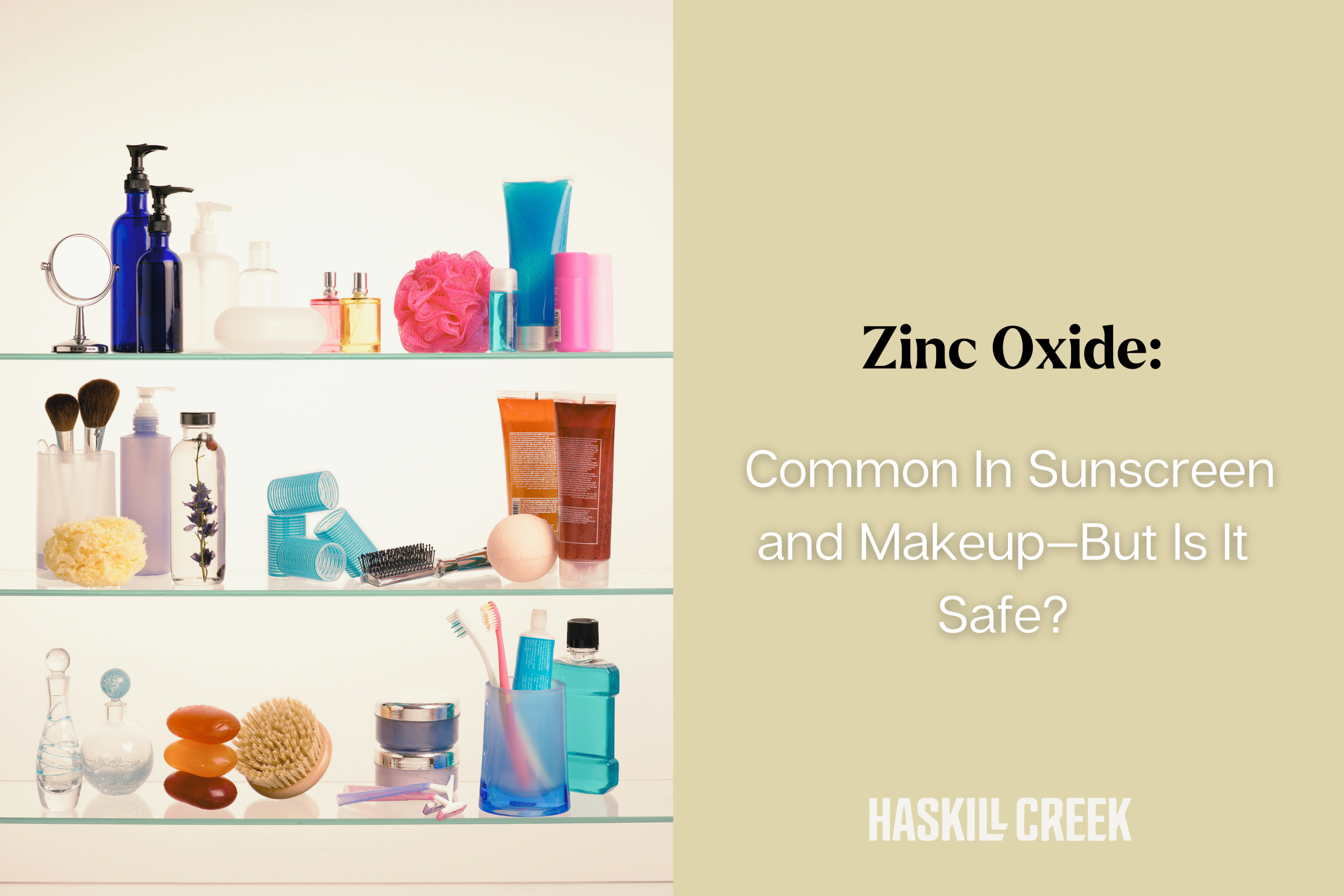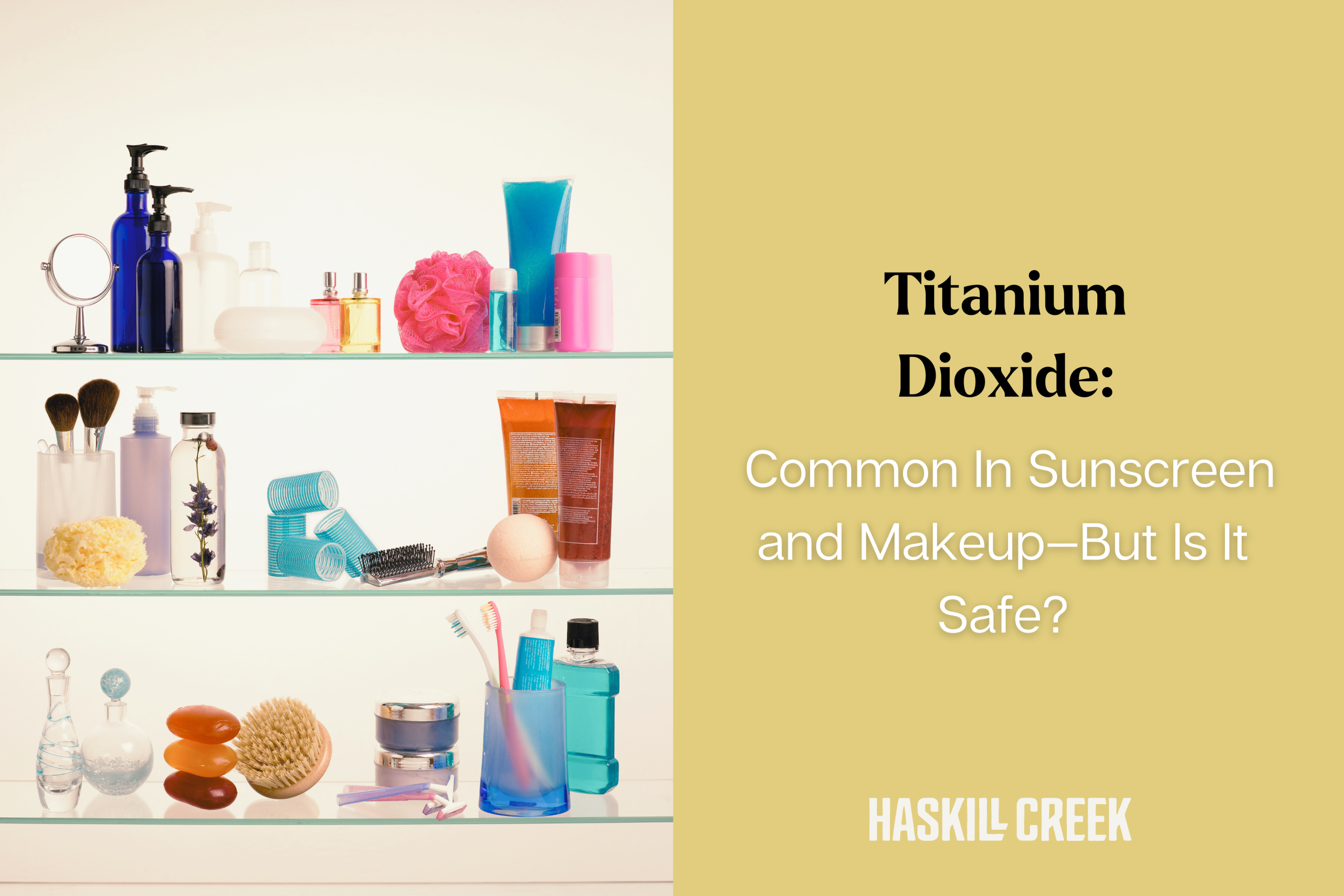Zinc Oxide: Common In Sunscreen and Makeup—But Is It Safe?

Curious about what’s in your everyday products? Decoding labels isn’t always easy, so we’re breaking it down—spotlighting ingredients, what they do, and whether they’re friend or foe. I’ll be your guide, with research-backed insights from the Haskill Creek team. Got an ingredient you’re wondering about? Email us at hello@haskillcreek, and I’ll dig into it!
What is Zinc Oxide?
Zinc Oxide is a naturally occurring mineral compound (ZnO) used in everything from diaper cream to SPF. In skincare and cosmetics, it acts as a physical UV blocker and mild skin soother. (🔗)
-
On ingredient lists, you’ll usually see it labeled simply as: Zinc Oxide
-
In sunscreens, it will be listed in the “Active Ingredients” section (in the U.S.), along with a percentage.
Why It’s Used:
-
UV Protection: Zinc Oxide provides broad-spectrum sun protection—blocking both UVA and UVB rays. It's one of the few SPF actives recognized as safe and effective by the FDA. (The other is Titanium Dioxide)
-
Gentle on Skin: It’s non-irritating, making it ideal for sensitive, acne-prone, or post-procedure skin.
-
Anti-inflammatory: Often found in balms and ointments for its calming properties (think diaper rash cream or spot treatments).
Why Safe with Caution?
Like Titanium Dioxide, Zinc Oxide is safest when used topically and in non-nano form. Here's what to keep an eye on:
👍Non-nano Zinc Oxide molecules are too large to penetrate skin and are considered safer and more stable. (🔗)
🛑 Inhalation Risk (Loose Powders & Sprays):
-
The biggest concern with Zinc Oxide comes from loose powders and aerosols, where ultra-fine particles (especially nano-sized) can be inhaled into the lungs.(🔗)
-
While it's not classified as a carcinogen like inhaled Titanium Dioxide, chronic inhalation of zinc oxide dust or fumes (e.g., in manufacturing or in high exposure) has been linked to respiratory irritation and a condition called "metal fume fever."(🔗)
🛑 Nano Particles
-
Nano Zinc Oxide has better cosmetic aesthetics (less white cast) but may raise concerns about particle absorption and oxidative stress. The research is ongoing, but clean brands tend to avoid nano forms.(🔗)
Haskill’s Position
Even trusted clean beauty platforms like Beauty Heroes and Credo carry makeup and sunscreen products that use Zinc Oxide—and for good reason. It’s one of the most effective, broad-spectrum SPF ingredients available and is gentle enough for sensitive skin.
As with Titanium Dioxide, the format matters. If you're using Zinc Oxide in your daily routine, choose creams, balms, sticks, or pressed powders over sprays or loose powder formulas. And always look for “non-nano” on the label when possible.
Zinc Oxide earns our Safe with Caution rating(🔗):
-
Safe in lotions, tinted SPFs, pressed compacts
-
Avoid with aerosol sprays and loose powders
-
When in doubt, go with a product format that keeps the mineral on your skin—not in your lungs.
Companion Ingredient in Mineral Sunscreen: Titanium Dioxide

Sign up for our newsletter!
Join to get the Haskill Newsletter and be the first to learn about new products, events, and other goings-on at Haskill Creek!









